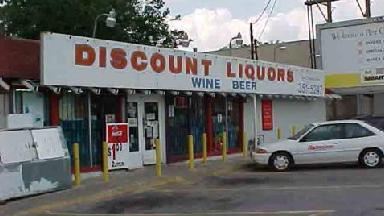 Posted by Pierre Berastain
Posted by Pierre Berastain
A good article on the racial politics of grocery stores. Not mentioned in the article, though still relevant, is the fact that one finds alcohol more readily available in poor black neighborhoods. Discrimination, favoritism, and privilege bleed into too often imperceptible spheres of people’s lives.
Commentary: Where Are the Grocery Stores in Black Neighborhoods?
By Kellee Terrell
When we talk about obesity in America, especially in low income, Black and Latino areas, it’s impossible to have this conversation without acknowledging the fact that mounds of studies have shown us that there is a serious lack of access to healthy whole foods, fruits, vegetables and lean meats.
In these “food deserts,” residents unfortunately have to rely on “bodegas,” corner stores, fried chicken spots, fast food joints and the hole in the wall Chinese restaurants for their meals. And we all know that these foods are mostly processed, high in sodium, sugar and fat.
Translation: Everything that is bad for us.
But here’s the question we need to be asking: Why don’t we have access to the same healthy foods and grocery stores that wealthier Americans and white folks have?
A recent report conducted at Rutgers University that analyzed grocery stores in New York City suggests that drugstore and grocery chains just don’t want to put down roots in Black and low-income neighborhoods by claiming that Black folks just “don’t demand them,” therefore they don’t believe they will make a profit.
Capitalism at its best.
This type of absence of chain stories in Black and Latino areas is often called “retail redlining,” and it’s completely legal. And what it does is force us to have to travel elsewhere to get the things that we need. And it happens all around the U.S.
I can speak to this. Having lived in the Crown Heights/Prospect Heights area in Brooklyn, there was a time where only one grocery store existed. The food at this store was OK, but if I wanted a variety of healthier foods, organic fruits and veggies and chicken and turkey that I trusted, I had to go to Trader Joe’s in Brooklyn Heights and lug them all the way home. But because it was important to me to eat food I trusted, I did it.
But I also recognized that I was fortunate because I can afford a monthly Metrocard and lived in a city where the trains and buses were accessible to me. But what happens to the folks who are not as lucky?
This is an important point that the Rutgers researchers point out in their study: There are people who cannot afford a car or a transit card to travel and will not have access. And chain stores are really OK with that.
To not have access to healthy food options means that the message that retail redlining is sending is that Black folks are not worthy of living a long healthy life. Most insulting is that when whites gentrify our neighborhoods, healthy stores miraculously pop up everywhere.
If we can take anything from retail redlining it is the need for us to mobilize and speak out. If retailers say that we don’t demand for them to be in our neighborhoods, perhaps it’s time that we shout long and loud enough until they can no longer claim that they don’t hear us.
The opinions expressed here do not necessarily reflect those of BET Networks.
Original article